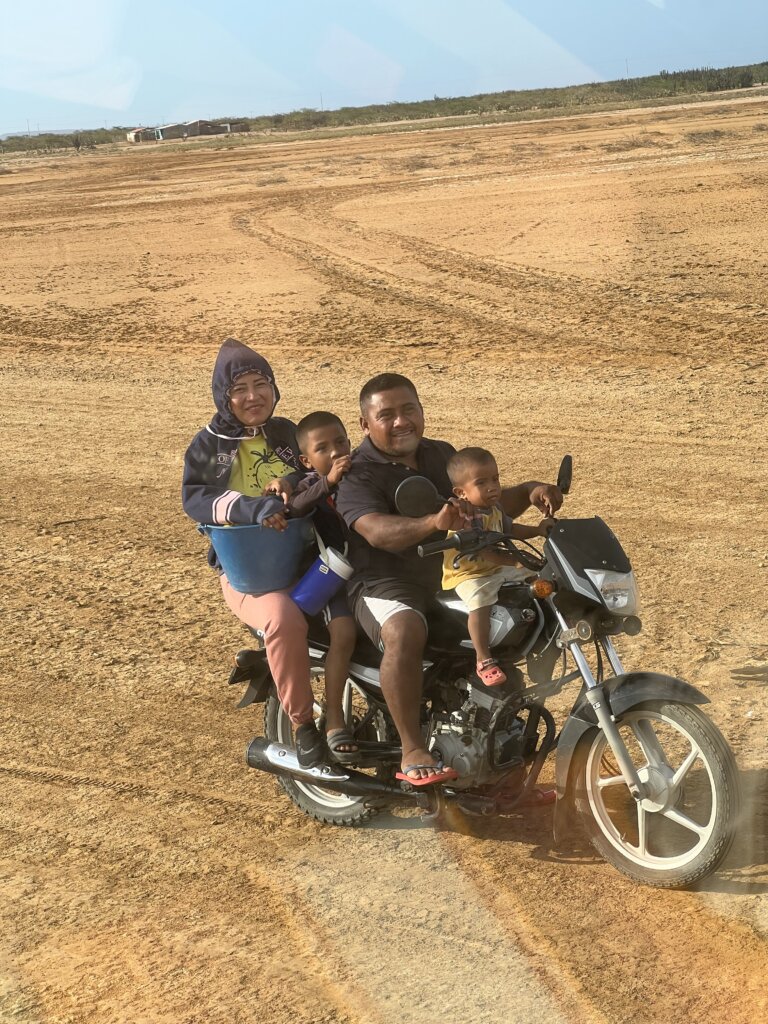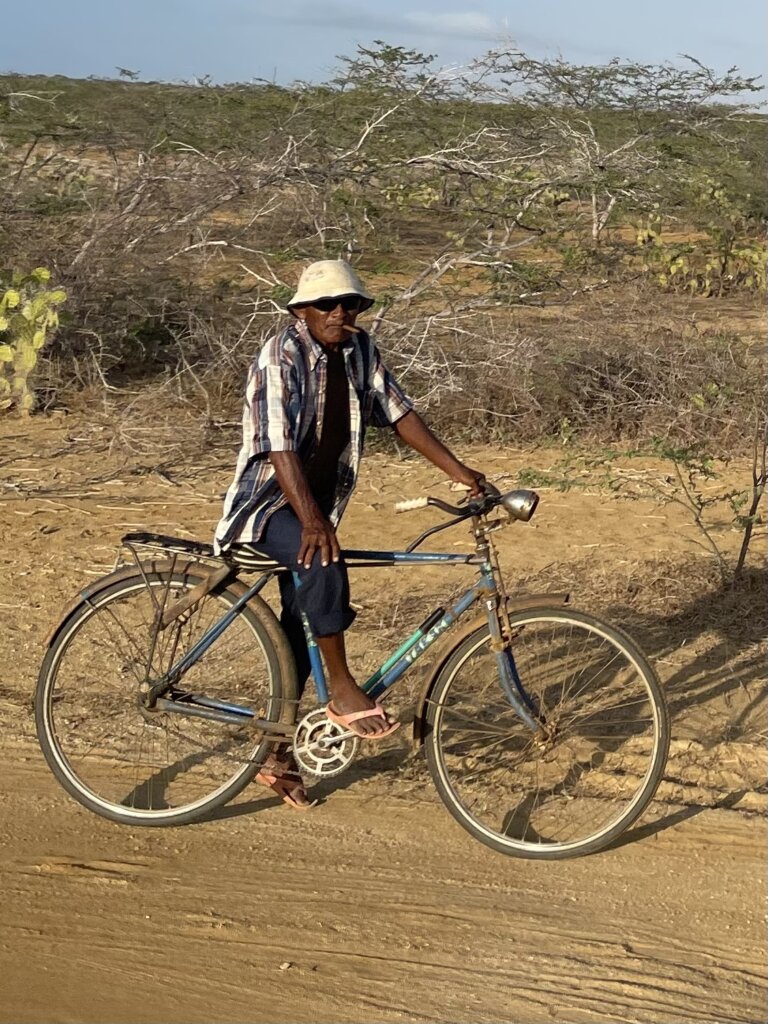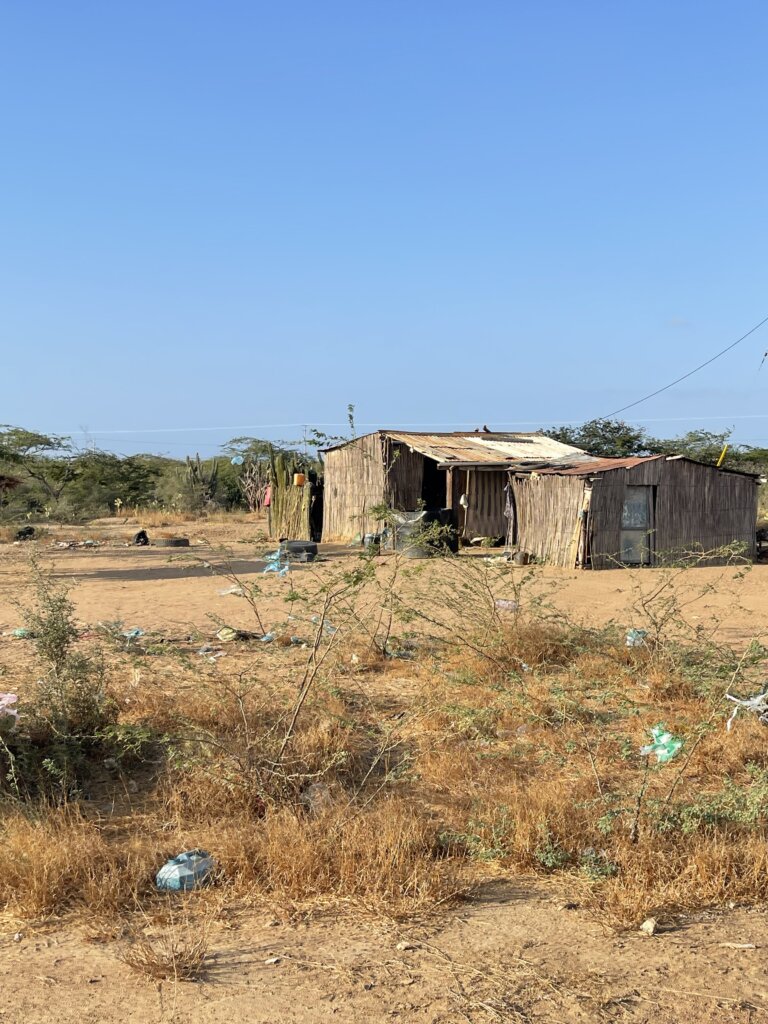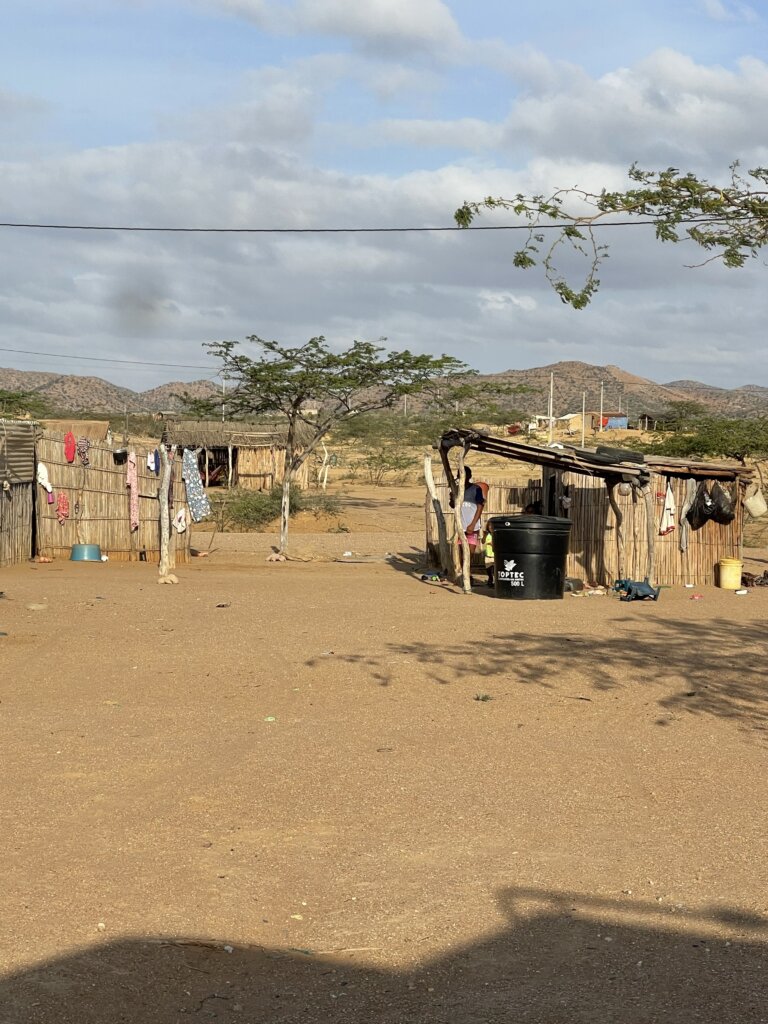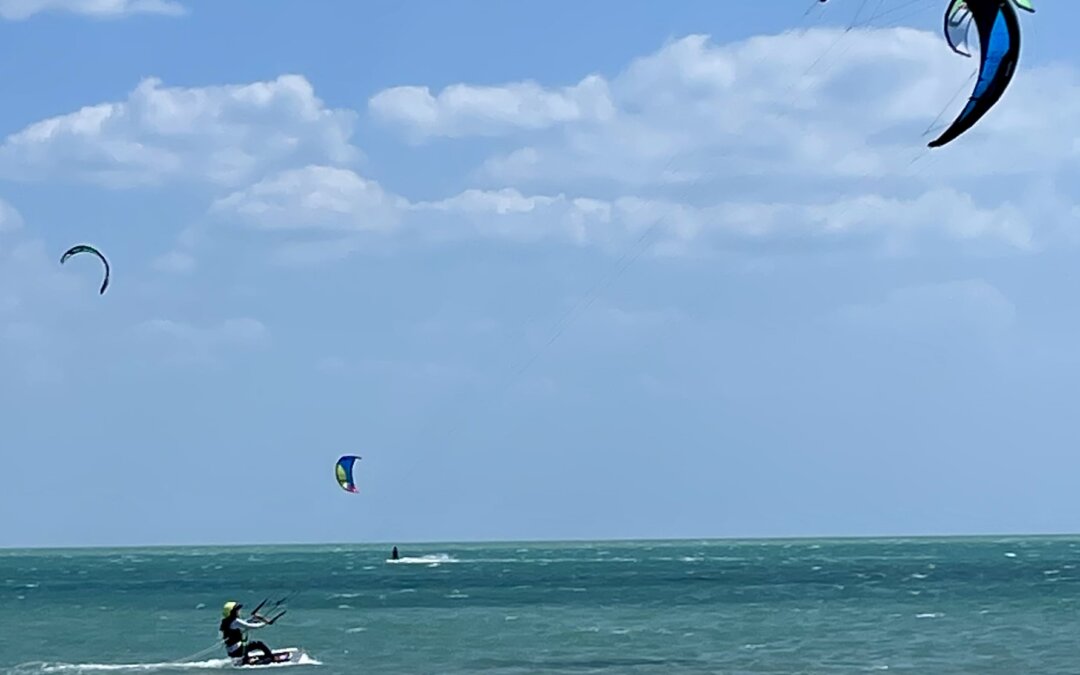urubia to cabo
Cabo de la Vela is a remote, windswept village on the northern tip of Colombia’s La Guajira Peninsula. Surrounded by arid desert, turquoise waters, and strong, steady winds, it’s a unique haven for kite surfers and those seeking a raw, off-the-grid experience. Home to the indigenous Wayuu people, life here is rugged and resourceful, shaped by the harsh sun, limited water, and salty air. Despite the tough conditions, Cabo’s striking landscape and vibrant kite-filled bay draws travelers from all over the world.
April 7-13. It was a long, hot, but fun drive up the peninsula. We traveled in convoy with two other families, sticking together due to past reports of armed daylight robberies in the area. Our first stop was in the last town, Uribia, a dirty, dirty city. The plastic pollution was 100 times worse than down on the coast. It feels like this is where every plastic bag caught in the wind comes to rest. It’s overwhelming & heartbreaking to see. I wonder what the locals think, or perhaps it becomes invisible.
We stocked up on fresh fruit and vegetables and enjoyed a delicious roadside lunch that cost next to nothing.
The final stretch into Cabo followed sandy tracks past scattered mud homes and hammock shelters. Kids would run toward us, hands out for candy, food, money, or water. Life here is tough. The hot wind is thick and relentless. Some homes have electricity, but most don’t. Bikes are ancient and rusted, water is precious, and stores are sparse—selling mostly junk food and soda. Goats wander freely, dogs are skinny, and the sun is merciless.


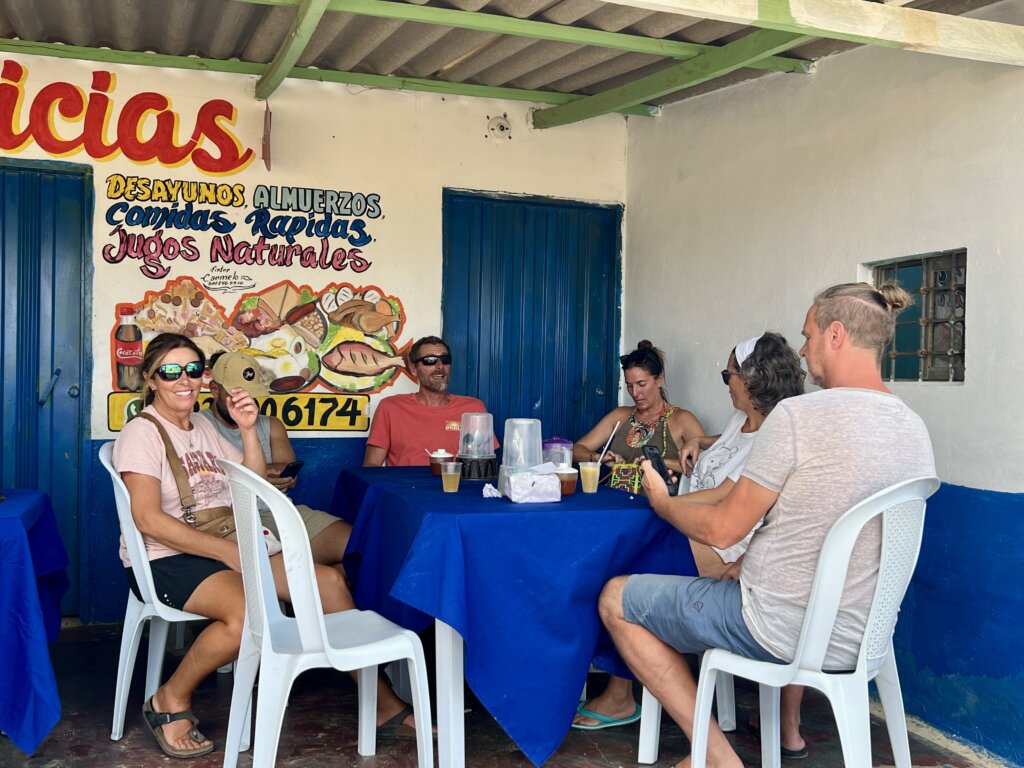
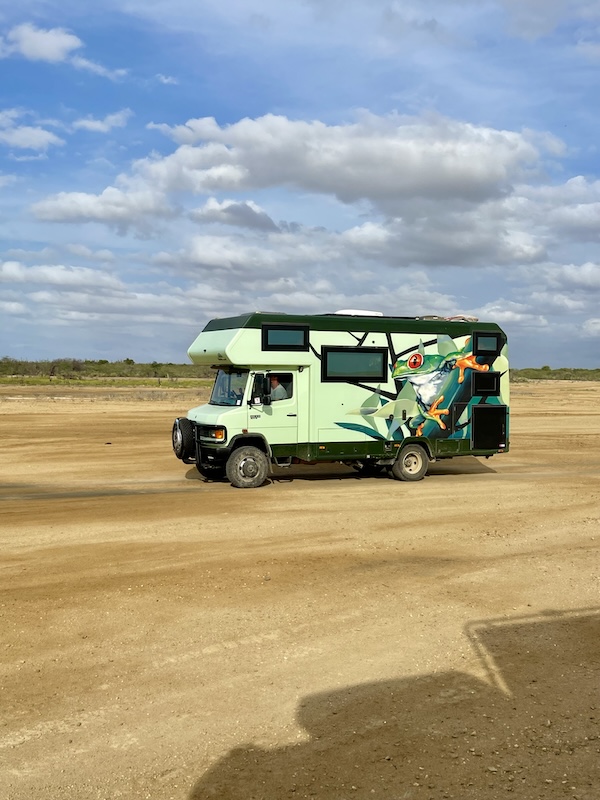

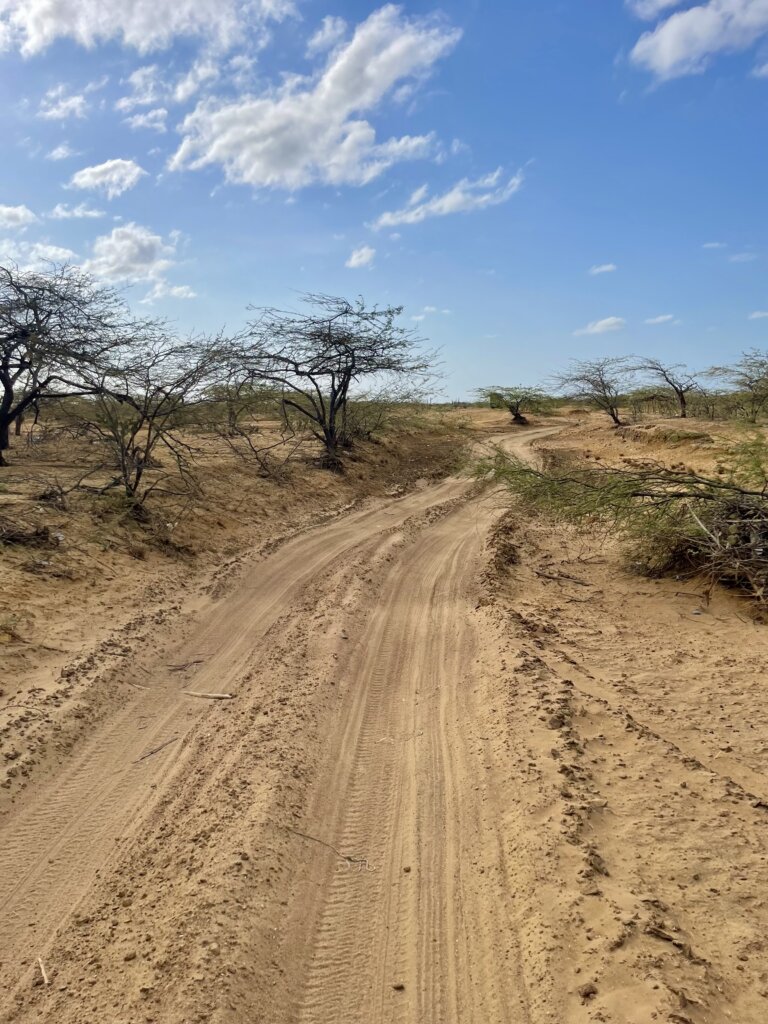
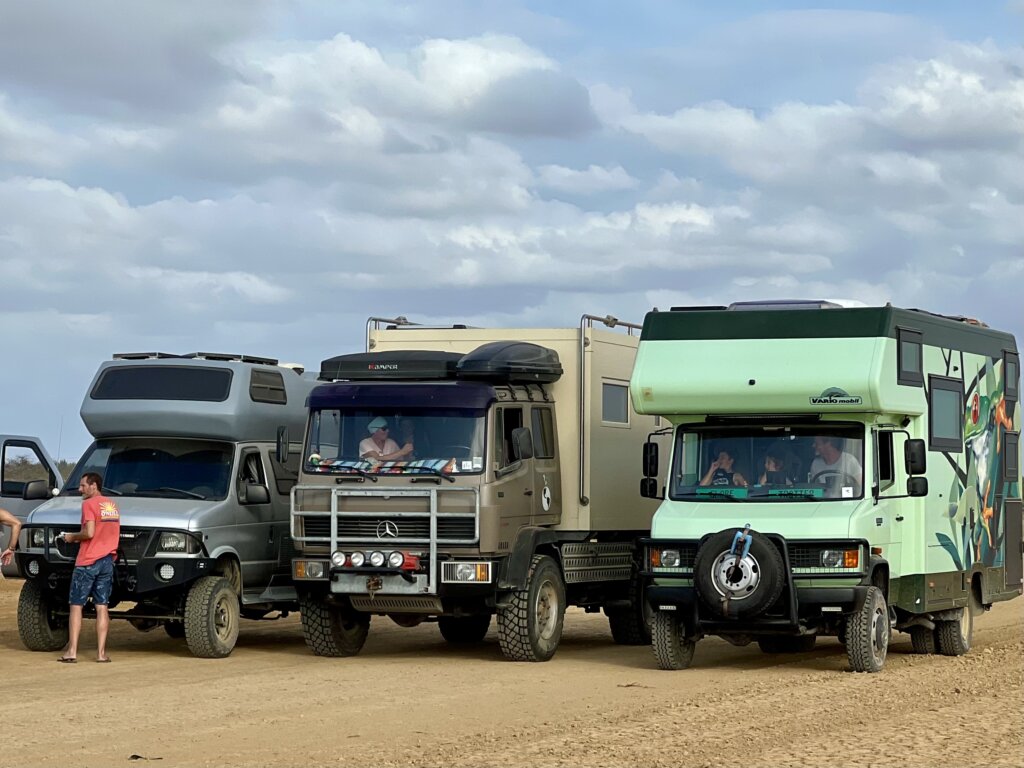
TAWI KITE CLUB
Tawi Kite Club is a small, locally owned kiteboarding school & camp run by Tawi and his Swiss wife Sophie, the club has been operating for 7 years, with kite lessons and basic camping accommodations. Their setup is rustic but welcoming, with a laid-back atmosphere for ten dollars p/night.
Jaxon and Klaas started lessons with Havi, their instructor, who speaks just enough English to get by. He’s not IKO certified, but at $45 USD an hour—compared to the usual $130–$150—we weren’t complaining. Jax had two one-hour sessions a day: one in the late morning, and another in the afternoon when the wind mellowed out. Havi focused on kite control, and had both boys standing on the board in no time. The only thing missing was the self-rescue component—we’ll have to teach them that ourselves.
There were a few pesky jellyfish around, though. Poor Jax got a nasty sting on the first few days and was too scared to get back in until we handed him a pair of thin thermal leggings. Voilà—no more stings, and he was back out riding in no time!
The wind was almost too strong. I was out on the 6m kite, nearly fully de-powered. A 5m would’ve been perfect. Gusts yanked me off the board more than once. I caught a couple stings too, but nothing serious—lucky, considering I was only in board shorts and a sun top.
Charley was in her element—kiting in just her bikini, launching higher and higher. I’d say she was getting at least three meters of air! Her abs are back in full force—nothing like kiting to bring on a six-pack. Warm blue water, steady wind, and all the space we could ask for—it really was a treat.

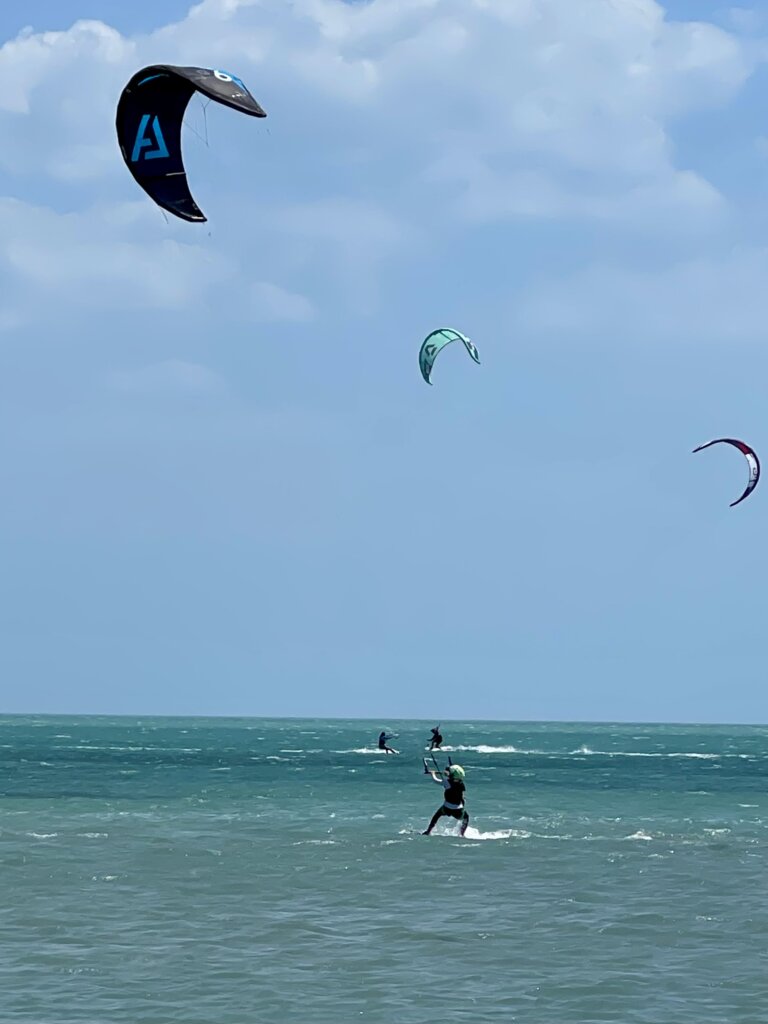
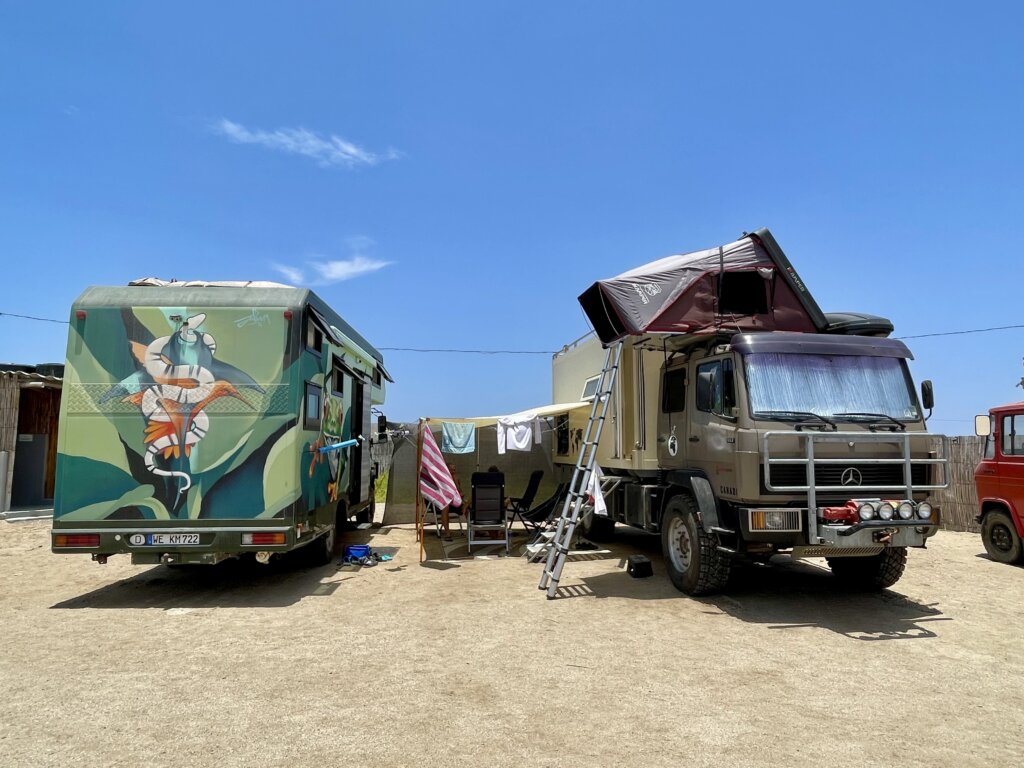

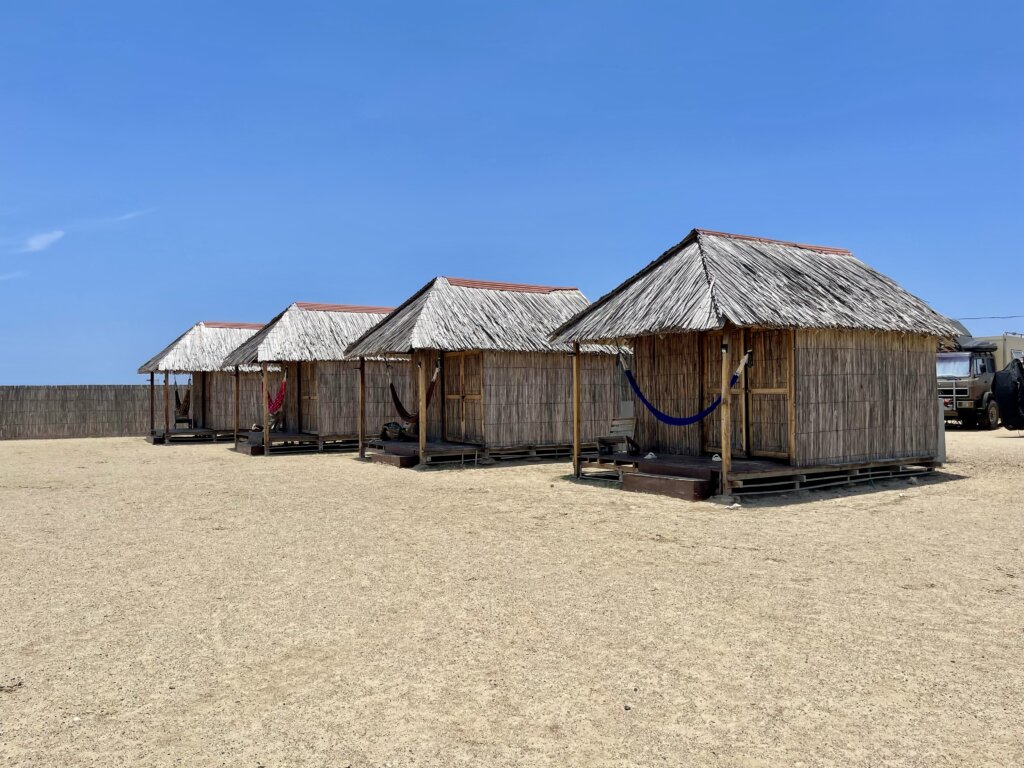
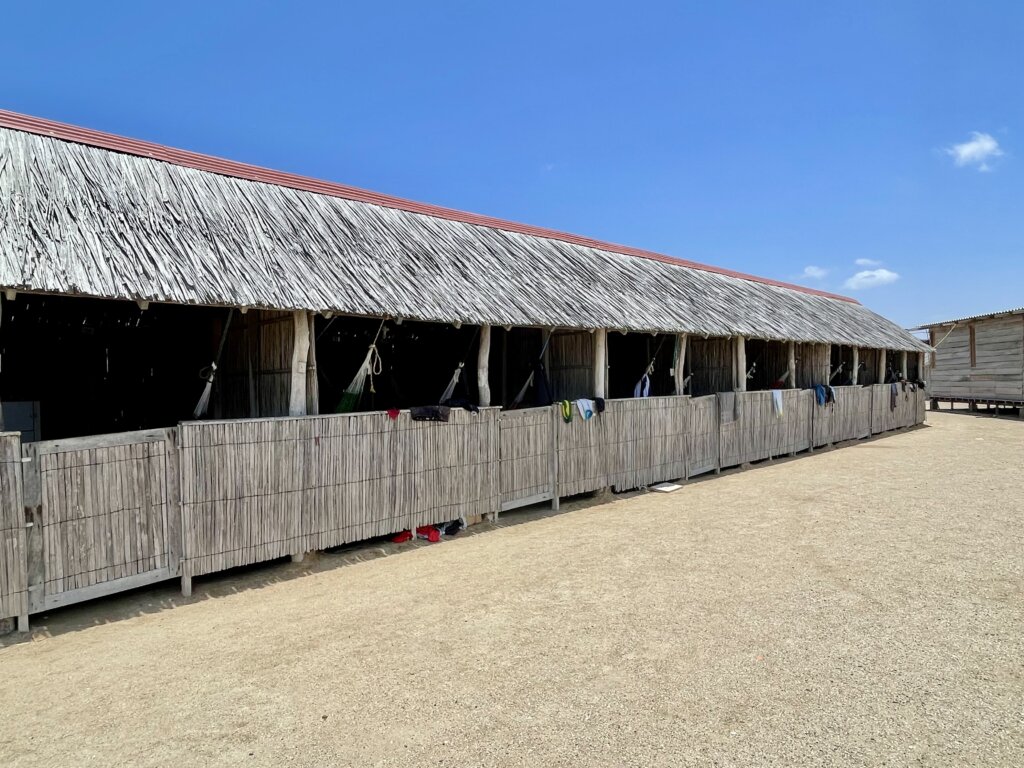
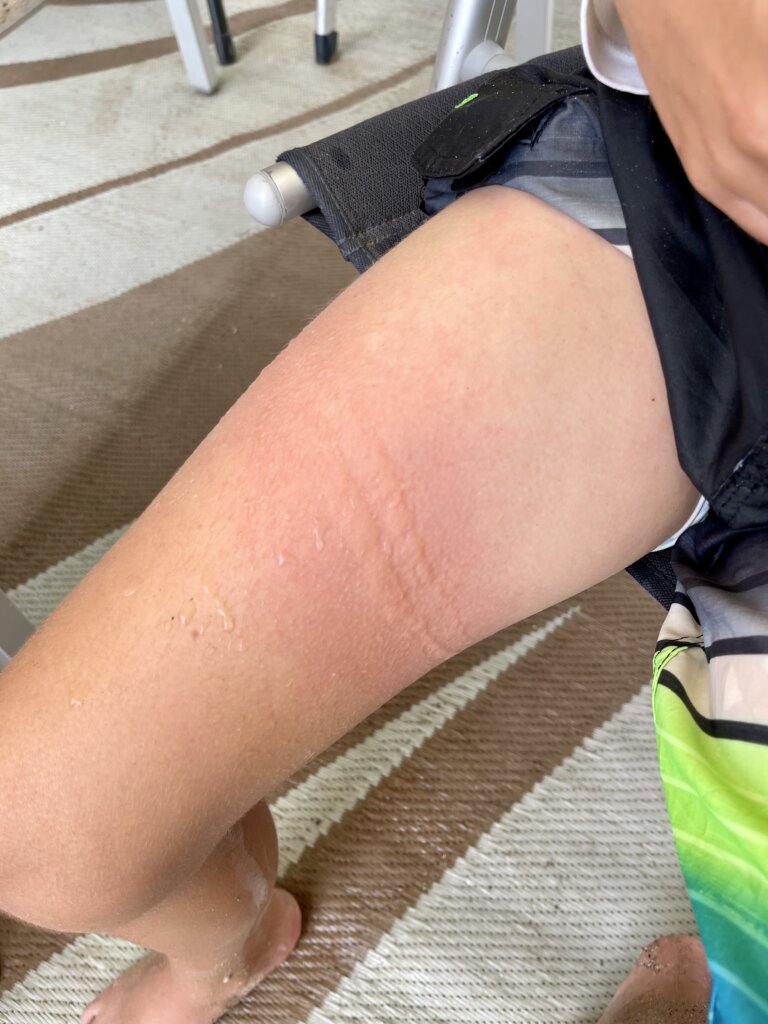

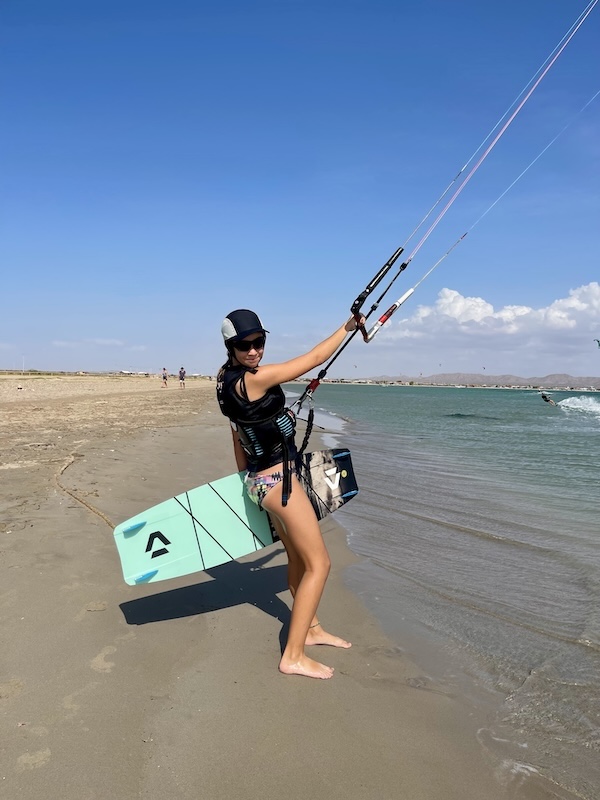
stopping for a week
We’ve set up camp nicely, mornings are chill until the wind comes up around 10am and steadily builds. By mid afternoon the wind is blowing hard, Tim Charley & I head out for a kite session.
Sunset is just after 6pm, this is when the most kites are on the water. Without the sun burning into our eyes, it makes for a different experience. After dinner we chill, chat and sleep. The nights are warm but bearable with the ever present breeze. A local lady walks the camp trying to sell her weavings, the traditional Colombian bags are so colourful, I want to buy them all, but settle on a neutral beige and white one. In the tourist towns they sell for 100,000 cop, I pay 60,000 for mine, and 30,000 for a custom bag to carry my water bottle in. We give her some clothes the kids have outgrown, Jaxon gives her son one of the Tim Horton’s soccer balls we are carrying, he’s delighted and gives Jaxon one of the bracelets that he makes and sells.
We meet a lovely charismatic young man riding his heavy bike around Colombia. He has crossed seven departments (provinces/states) many mountains and dangerous roads. Such as positive, beautiful spirit. This man works hard scratching a living together with his rusty bicycle and mobile juicing station. Am sure he doubled his price for us, but then again, I would have done the same
Alex & Eric come and visit in the afternoons, they chose to free camp down the beach where they take lessons with a French speaking instructor, and are now ripping around too. They are heading into Venezuela, likely a couple of weeks ahead of us. Alex speaks French, English and Spanish and has been a help with translations. Hopefully we’ll meet up with them later as we are on the same path.

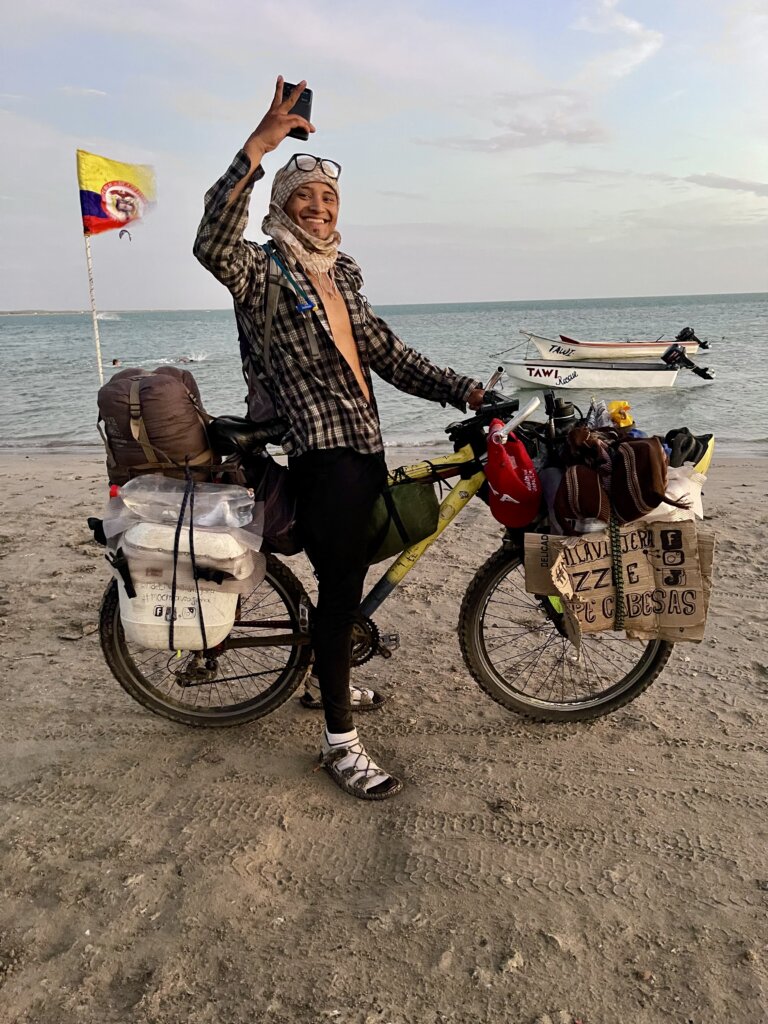
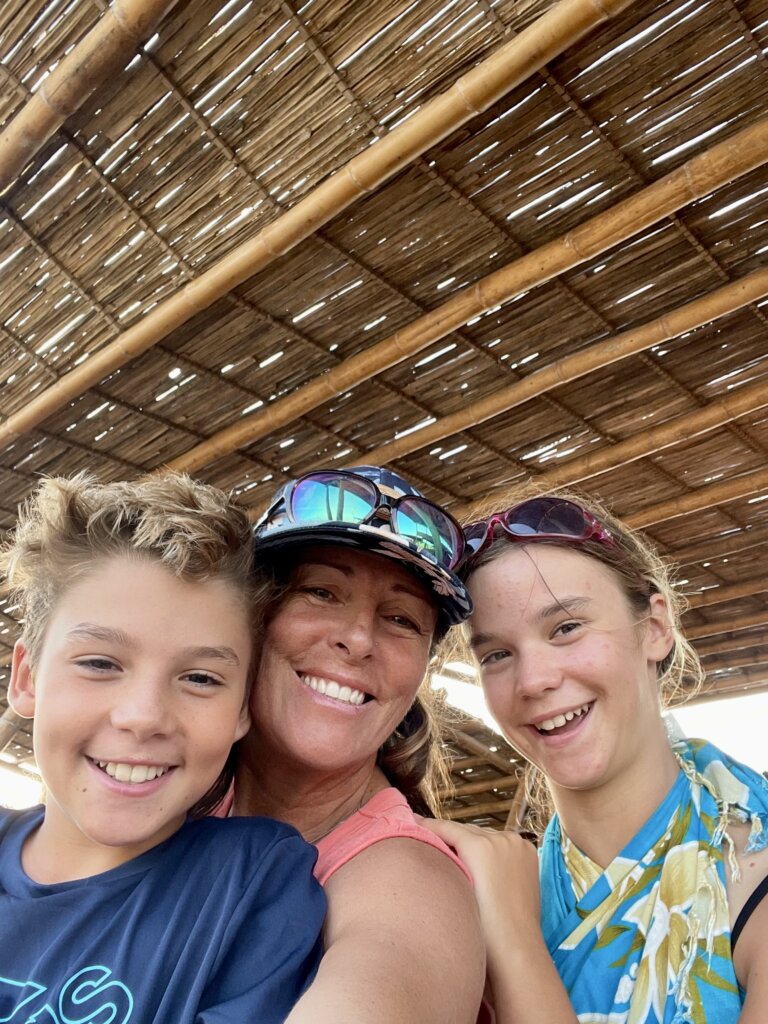
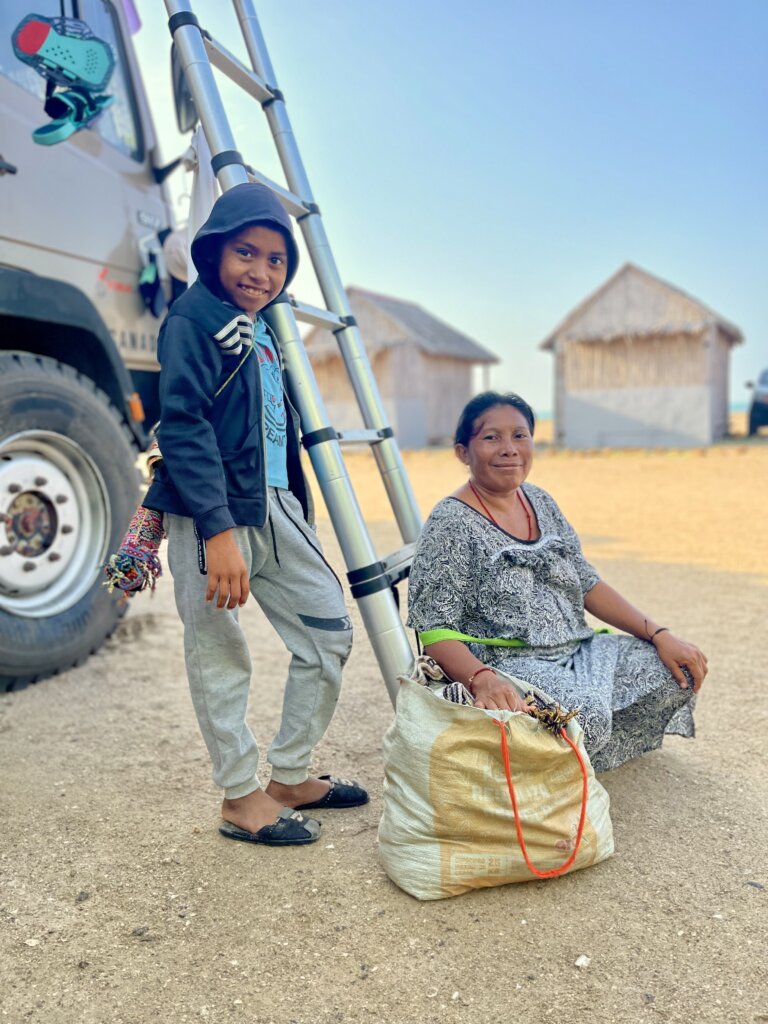
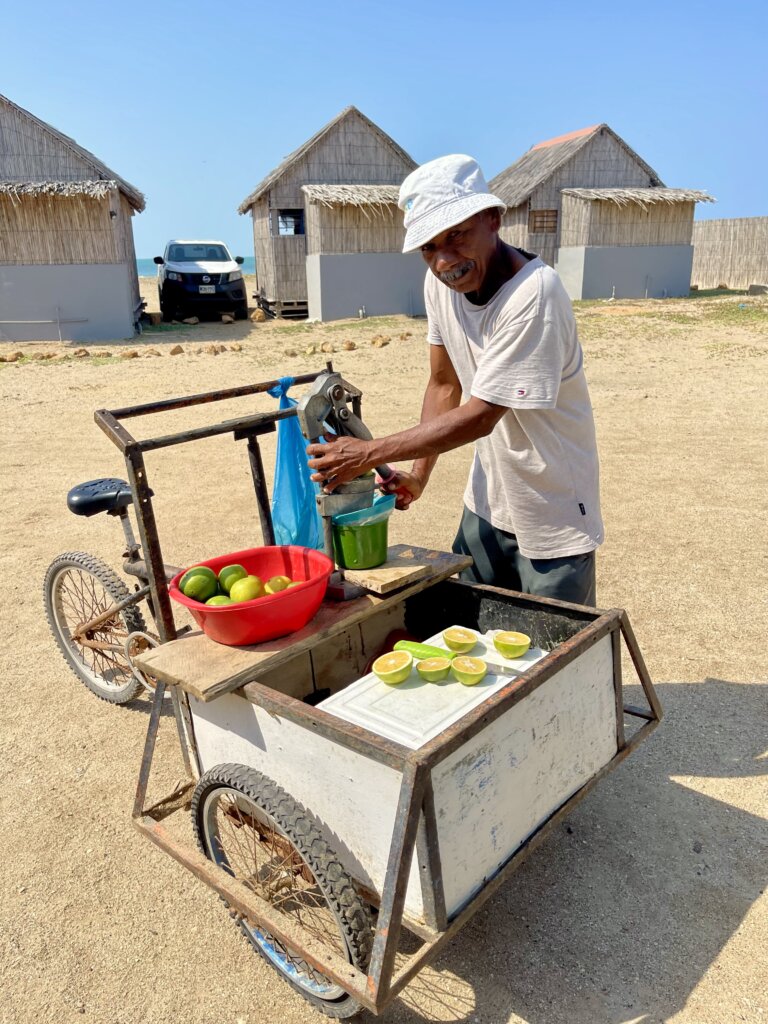
DECISIONS
The ongoing conversation is: Where to next?
We’re spoiled for choice and having a hard time deciding which direction to take. One option is to head into the mountains for a week to cool off and give the truck a proper clean—it’s starting to resemble the rusty bicycles we see around here. From there, we could cross into Venezuela for a month, then make our way down to Manaus and travel by boat—with the truck—along the Amazon River to Belém. After that, we’d follow the north coast eastward toward Fortaleza for some kiting, then head south through Brazil. The catch? We can only spend 3 out of every 6 months in Brazil on a tourist visa.
Alternatively, we could continue through Colombia into Ecuador and Bolivia, then take on the infamous, unpaved BR-319 road through the Amazon to Manaus. From there, we could loop up and down into Venezuela and eventually follow the river down to Belém.
There are two more routes we’re considering, each with its own pros and cons.
The end goal is to reach Ushuaia, Argentina by around December—just in time for Patagonia’s summer hiking season and all the prime windy-season kiting spots along the way.
We’d love to do and see it all, but that would take more than the 18 months we have.
We are tired of the heat, wind, dust and waking up sweaty. We need to gain some altitude, cool down for a while.
leaving Cabo
April 13th Leaving we decide to take an alternate road which was supposed to be a 30 min short cut. Not so, it ended up taking an hour longer, which was ok. Crossing the top of the peninsular dusty sand roads we make our way past many more simple mud walled homes where children run out to the truck in hope of receiving something, anything. They are bold & shameless in their begging. One lone little boy, no older than 6 ran up to us, no smile, just hopeful eyes. We stopped and gave him an ice cold bottle of water, so excited you’d think he just won the lottery, running home to show his mother.
Next a short stop in

